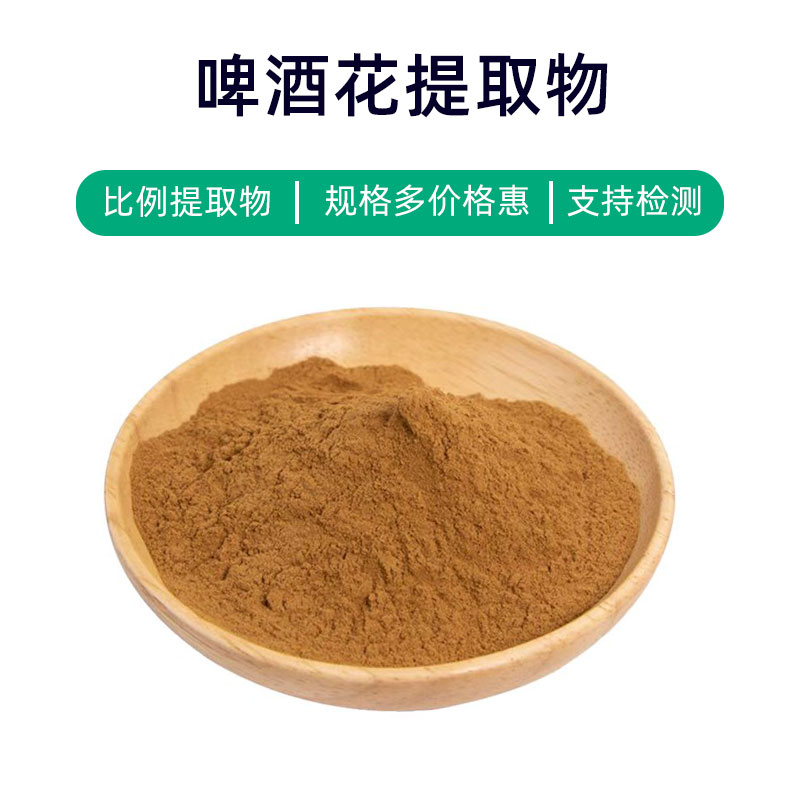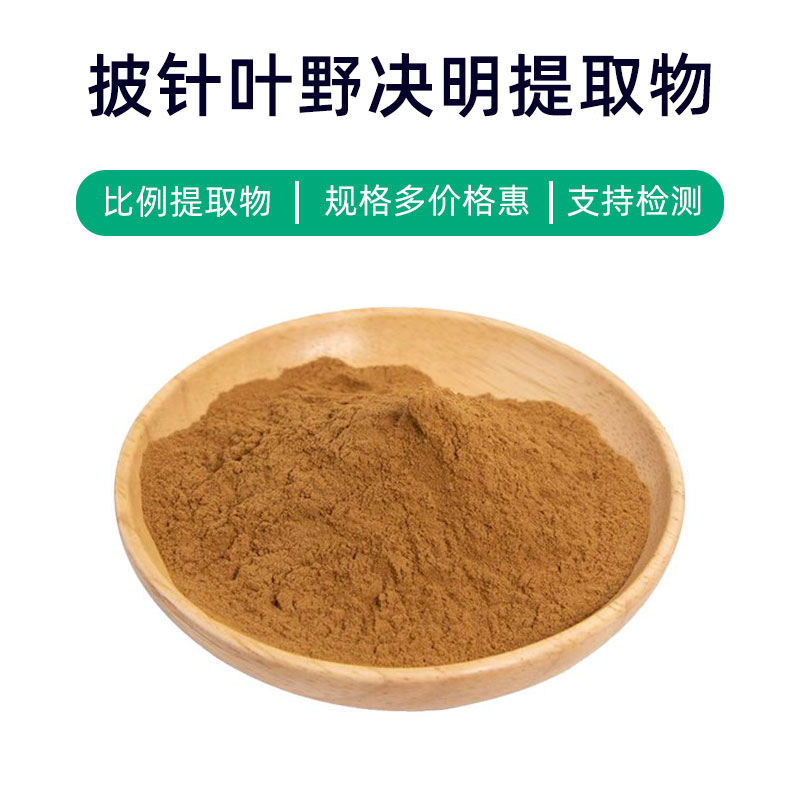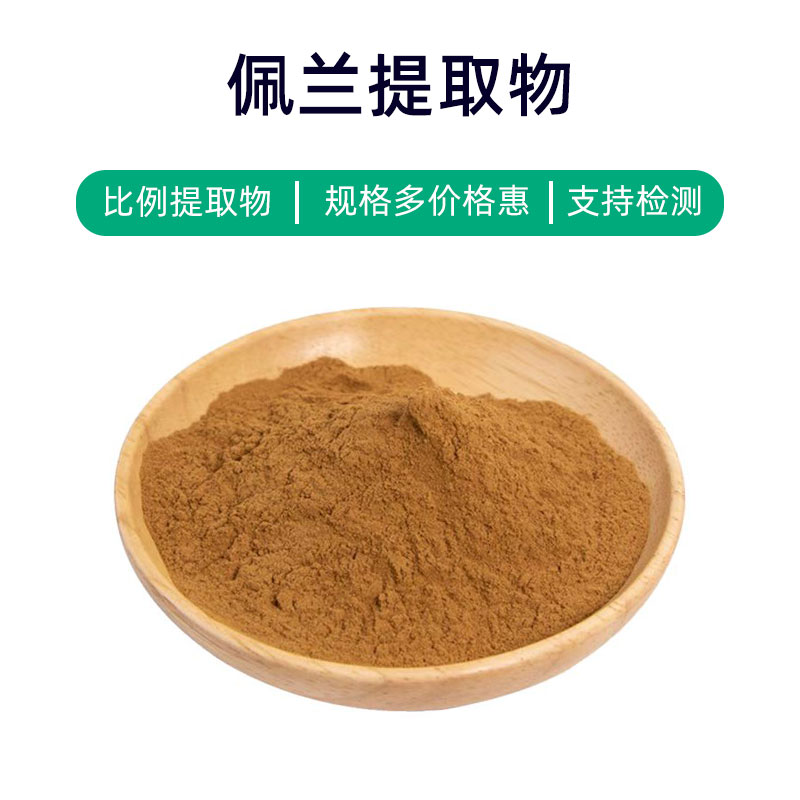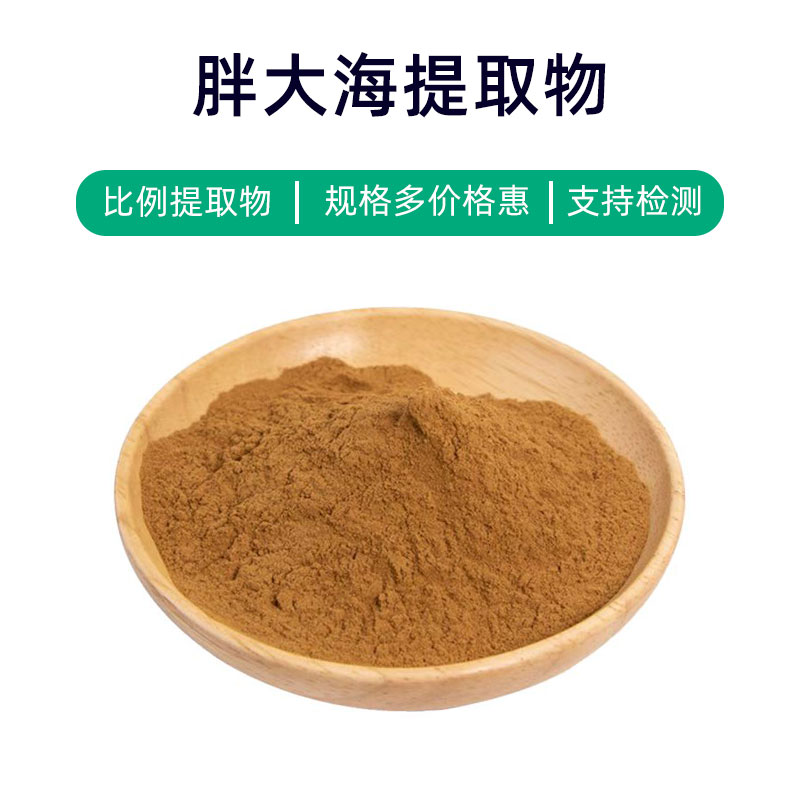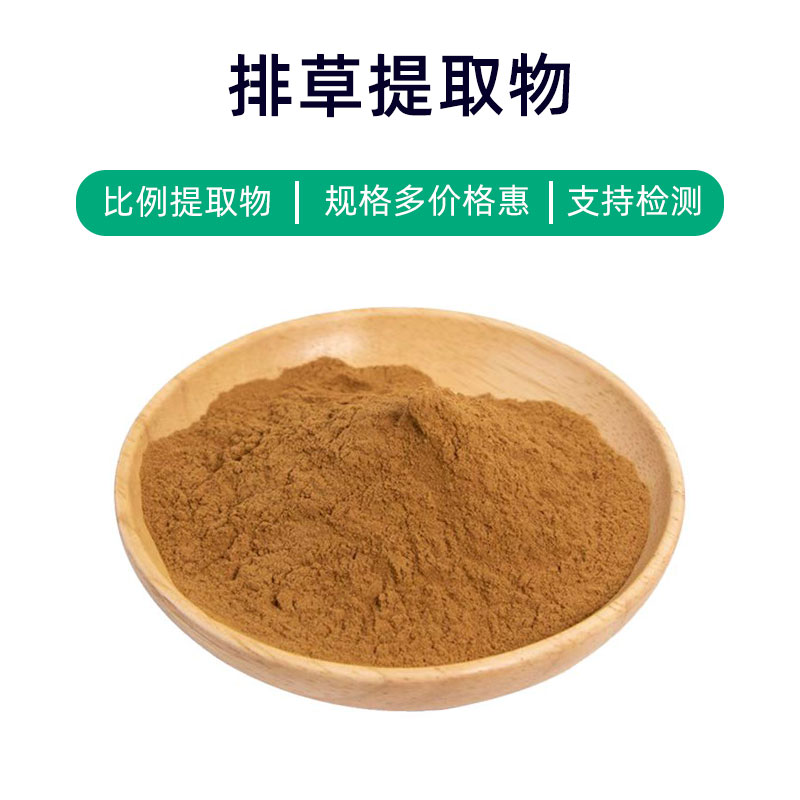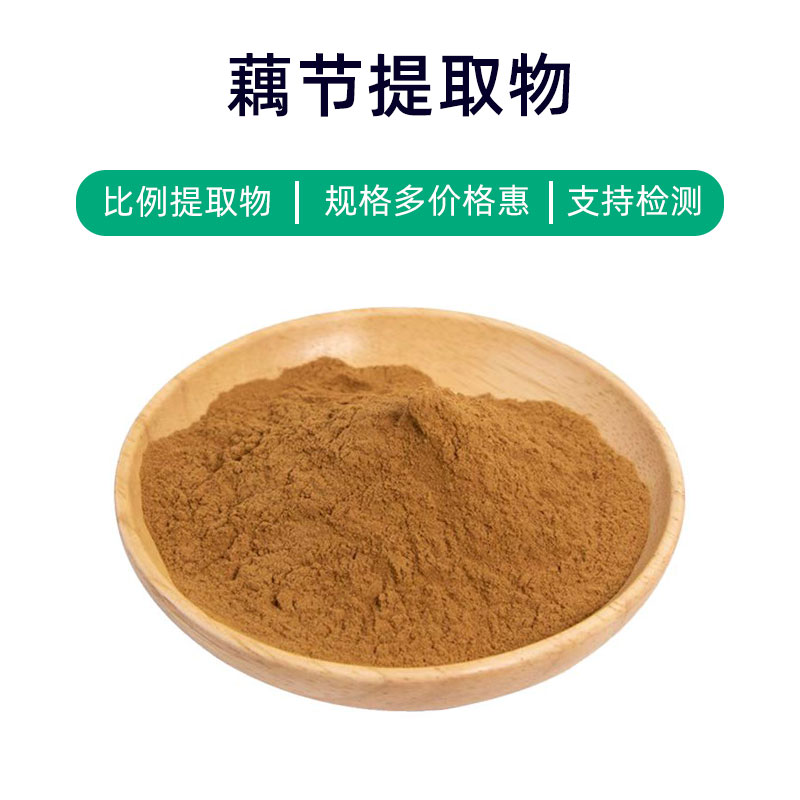Basil Extract Product Introduction
Basil extract is a natural plant extract derived from the basil plant, with main components including essential oils, phenolic compounds, and flavonoids. It finds extensive application in the food, health supplement, and cosmetic industries.
This extract has various effects and applications. Firstly, it has antioxidant properties that can neutralize free radicals, slow down cell aging, and protect cells from oxidative damage. Secondly, basil extract has antibacterial and anti-inflammatory effects, helping to prevent and alleviate inflammatory responses and reduce bacterial and fungal infections. Additionally, it also has calming effects that can help relieve anxiety and stress, improving sleep quality.
In the food industry, basil extract is often added to seasonings, beverages, and baked goods to enhance flavor and nutrition. In health supplements, it is frequently used as a natural antioxidant and anti-inflammatory agent, available in oral liquids, capsules, or health foods to boost immunity and promote health. In cosmetics, basil extract is commonly used in skincare and personal care products for its antioxidant, antibacterial, and soothing properties, helping to improve skin texture and maintain healthy, youthful skin.
Overall, basil extract serves as a natural plant extract with broad application prospects across multiple fields, providing effective support for health and beauty.
Basil Extract Production Process
The production process of basil extract typically includes the following steps:
- Raw Material Collection and Preparation: Select fresh, healthy basil plants as the extraction material. After harvesting, wash and process to remove impurities and foreign matter, ensuring the purity and quality of the raw materials.
- Extraction Steps: Crush or chop the processed basil plants to increase surface area, which facilitates the extraction of active components. Then, use suitable solvents (such as ethanol or water) to extract the plant material, allowing the active components to dissolve in the solvent.
- Maceration or Extraction: Ensure thorough contact between the solvent and plant material, typically through methods such as soaking, steeping, or heating. After a certain extraction time, the solvent will contain the active components of the basil plant.
- Filtration and Concentration: Filter the liquid obtained from extraction to remove solid residues and impurities, resulting in a clear extract. Then, use concentration equipment (such as an evaporator) to concentrate the extract, removing excess solvent to increase the concentration of the extract.
- Purification and Separation: Further purify and separate the concentrated extract, typically using methods like liquid-liquid extraction, crystallization, or gel chromatography to remove impurities and enhance product purity and quality.
- Drying and Grinding: Dry the purified extract to remove residual moisture, enhancing stability and prolonging shelf life. Then, grind or mill the dried extract to achieve the desired particle size and powder consistency.
- Packaging and Storage: Finally, package the extract in suitable containers, sealing them to protect against light, moisture, and oxygen. Typically stored in a dry, cool, dark environment to maintain product stability and the effectiveness of active ingredients.
By following these processing steps, high-quality, pure basil extract can be produced for use in the food, health supplement, and cosmetic industries.
Basil Extract Effects and Side Effects
Basil extract is a commonly used natural plant extract with various effects and functions, mainly including the following aspects:
- Antibacterial and Anti-inflammatory Properties: Basil extract contains abundant antioxidants and volatile oils, providing good antibacterial and anti-inflammatory effects, useful for treating skin infections, inflammation, and more.
- Antioxidant and Anti-aging: Rich in antioxidants, basil extract can neutralize free radicals, slow cell aging, and protect the skin from environmental pollutants and UV damage, helping to maintain skin health and youthfulness.
- Soothing and Calming the Skin: Basil extract possesses good soothing and calming properties, alleviating skin discomfort, reducing symptoms of allergies and redness, and providing a more comfortable skin feel.
- Moisturizing and Hydrating: With rich natural moisturizing factors and nutrients, basil extract deeply hydrates the skin, enhancing its water retention ability and making the skin soft and smooth.
- Refreshing and Oil Control: Basil extract possesses astringent and oil-controlling properties, helping to tighten pores, reduce sebum secretion, and improve oily skin issues for a fresh, non-greasy feel.
- Promoting Hair Growth: Basil extract stimulates the scalp, promoting hair growth, reducing hair loss, and addressing dandruff issues.
- Mood Enhancement and Stress Relief: Basil extract has a fresh, pleasant aroma with calming and soothing properties, helping to alleviate anxiety and stress, improving mood.
While basil extract offers various benefits, caution regarding individual differences and potential side effects is essential. It may cause allergies or adverse reactions, so conducting a skin sensitivity test before use and consulting a doctor for guidance is recommended.
Basil Extract Application Scenarios and Dosage
Basil extract has a wide range of applications in medicine, food, and cosmetics. The following are its primary application scenarios and dosage recommendations:
- In the Medical Field:
- Antibacterial and Anti-inflammatory Agents: Basil extract’s antibacterial and anti-inflammatory properties make it suitable for preparing topical medications, such as antibacterial ointments and anti-inflammatory sprays for treating skin infections and inflammation.
- Oral Care Products: Basil extract can be included in oral care products, like toothpaste and mouthwash, offering antibacterial, anti-inflammatory, and breath-freshening benefits.
- Scalp Care Products: With its stimulating effect on the scalp, basil extract can be used in shampoos and scalp care solutions to promote hair growth and reduce dandruff.
- In the Food Industry:
- Seasonings: Basil extract’s unique aroma makes it valuable as a seasoning for various dishes and soups, enhancing taste and flavor.
- Beverages: It can be incorporated into beverages like teas and juices, adding a refreshing fragrance and taste.
- Health Foods: Rich in nutrients, basil extract can be used to prepare health foods such as oral liquids and capsules that boost immunity and improve digestion.
- In the Cosmetic Field:
- Facial Skincare Products: Basil extract can be featured in facial skincare products like creams and masks, providing antioxidant, soothing, and moisturizing effects suitable for all skin types.
- Body Care Products: It can also be added to body care items, such as shower gels and lotions, helping to control oil and hydrate, maintaining skin health.
- Fragrances and Body Products: With its refreshing scent, basil extract is ideal for formulating perfumes and body lotions to enhance bodily fragrance.
Dosage Recommendations:
- Topical Use: For medical and cosmetic products, typically follow product instructions or a doctor's advice, generally applying a suitable amount to the skin and gently massaging until absorbed.
- Oral Use: For oral products like health supplements, adhere to product instructions or medical advice, usually 1-2 times daily with each dose being 5-10 mL.
When using basil extract products, consider individual differences and suitability, as allergic reactions or side effects may occur. Conducting a skin sensitivity test prior to use and using under the guidance of a healthcare professional is advised.
Basil Extract Source Plant Introduction, Distribution, and Growth Environment
Basil (scientific name: Ocimum basilicum) is a common herbaceous plant in the Lamiaceae family. It originates from the Indian subcontinent and is an ancient herb cultivated and used worldwide. Here is detailed information about the source plant of basil extract, including its introduction, distribution, and growth environment:
Plant Introduction:
Basil is a perennial herb that typically grows 30 to 60 centimeters tall, occasionally reaching up to 75 centimeters. Its leaves are oval or lance-shaped with smooth surfaces, available in various colors such as green, purple, and white. The flowering cluster consists of small purple or white flowers, with a long flowering period usually occurring in summer.
Distribution:
Originally native to the Indian subcontinent, basil has been introduced and cultivated worldwide. It thrives in tropical and subtropical regions but can also grow in temperate areas. Basil is widely cultivated across Asia, Africa, Europe, and the Americas.
Growth Environment:
- Climate Requirements: Basil prefers a warm, humid climate and adapts well to sunny environments, though it can tolerate some degree of shade.
- Soil Requirements: Basil is not overly particular about soil but prefers fertile, well-drained soil. It can grow in various soil types, including sandy, loamy, and clay soils.
- Moisture Requirements: Basil requires ample moisture but should avoid waterlogging. Maintaining moist soil is crucial for healthy growth.
- Cultivation Methods: Basil can be propagated by sowing seeds or taking cuttings. It grows quickly, often ready for harvest within 4 to 6 weeks after sowing. Regular pruning promotes new growth and maintains healthy plant form.
Overall, basil is a highly adaptable, fast-growing herb that thrives in a variety of climates and soil conditions. Its rich aroma and leaves have both medicinal and culinary uses, making it widely cultivated and utilized globally.
Basil Extract Processing and Storage
The processing of basil extract typically involves the following steps: First, fresh basil plants are washed and cleaned to remove surface impurities and dirt. Next, the cleaned basil is crushed or ground to increase extraction efficiency. Then, appropriate extraction methods (such as water extraction or alcohol extraction) are employed to extract the active components from the basil. Finally, through concentration, drying, and other processing steps, the extracted basil extract is produced in powder or liquid form for subsequent packaging and storage.
For storage, basil extract should be kept in a cool, dry environment, shielding it from direct sunlight and moisture. Powdered basil extract can be placed in sealed containers to prevent moisture or contamination. Liquid basil extract should be stored in sealed glass or plastic bottles to avoid exposure to air. Regular checks on the sealing of storage containers help ensure the quality and stability of the extract. Proper storage methods can effectively prolong the shelf life of basil extract and maintain its medicinal value and efficacy.
Monica Sun is a seasoned expert in the plant extraction industry with over a decade of experience in research and production. She specializes in the extraction and purification of plant active ingredients, focusing on driving innovation in natural product applications. Monica has participated in the development of multiple functional plant extracts, delivering high-value natural raw material solutions for the health food, pharmaceutical, and dietary supplement sectors.









